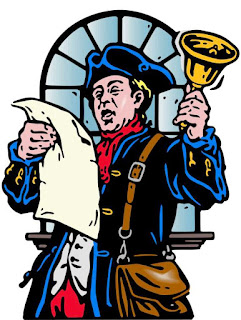THE WEAK POINTS OF TRADITIONAL CHANNEL OF COMMUNICATION, USING THE TOWN CRIER AS A CASE STUDY
Communication channel that existed in Africa before the modern mass media is commonly known as the traditional channel of communication.
One can put it that, traditional channel of communication is the indigeneous mode of sending and receiving information especially in Africa. This mode of communication helped our fore fathers, traditional rulers and members of the communities to distribute ideas.
According to Ugboajah Frank (1989), the traditional communication channel is the oral media that was formed as a result of the interplay between traditional community customs and conflicts, peace and strife, cultural similarities and differences, symbols and codes, also moral traditions which are mythology, oral literature (poetry, story telling that is tales, proverbs too) masquerades, rites, rituals, music, dance, drama costumes and similar abstractions and artifacts which compass a people’s factual, symbolic and cosmological existences from birth to death and even beyond death.
Traditional communication channel makes the audience to understand the importance, it has force and credibility. It is fixed into African’s indigenous institutions.
Traditional channel of communication represent the most, potent mechanism for communication among the different people of Africa.
Traditional Channel of communication (Oral media) can be divided into two major categories, that is verbal and non-verbal.
Verbal traditional communication is the spoken form of communication that employs visual aids and non-verbal elements to support the conveyance of meaning. Which are: Speeches, discussions, presentation and aspects of interpersonal communication. That is communication between one person to another. Letter writing, talking on phone with someone, exchanging pleasantries, etc are examples of interpersonal communication. And these communication can take place through these traditional communication channels which are: the family, at market place, village square, the town crier, visits and the church.
The town crier as the area of concentration here involves non-verbal communication which is complete in itself.
Etukudo Udo (1989) noted that the town crier is a member of the towns highest administering body to the rest of the people.
The town crier uses a wooden gong and many times steel gong, he hits it to attract the attention of the people in a community. (Hitting the gong is non verbal communication) before passing the information sent by the council of elders among Igbos, Oba in Yorubas' setting then Emir in Hausas' setting. The town crier is seen as the sender of messages.
A town crier is a person whose official duty is to proclaim an information to the people in a town, especially in the old days.
A town crier is an officer who makes public announcement to the people. He is employed by a town council, traditionally to make public declaration of any information that pertains to a village or town.
In rear conditions, a town crier is used in court for official announcements. He is an important link between the opinion leaders and rest of the people. Every sentence he makes is usually said again for better understanding to the people.
THE WEAK POINTS OF A TOWN CRIER
A town crier's voice is not loud enough compared to the use of public address system, that is the speakers, microphones and so on. The town crier's natural voice can not send message across at once to every body in a large community.
The town crier who uses gong or bell to attract attentions of the people in a town but not a whole community before disseminating his message adopts strategies that makes him disseminates information, in the manner that he takes control of his audience both in empathy and cultural way.
The town crier stops at the most strategic and quiet places; strikes his instrument repeatedly in order to draw attention before announcing. The seriousness of such announcement are usually realized when they are made very early in the morning or late at night. And these used to be a silence period in the village.
A town crier can cause distortion in communication when passing information, he may feel to share it in a way that is not suitable for the people. He may repeats the message or the other way round.
Comparing town crier in traditional communication system to the modern communication system.
Town criers are more likely affected by noise which causes distraction and affects the range of communication, compared to the modern communication where there are television, radio for a broadcaster to make his/her announcement or send information to the whole word at the same time. Messages, announcements, stories, advertisements, etc can also be sent through the newspapers, magazines, internet, pamphlets, etc to the public.
Modern town crier use the public address system, mounts on top of a car or motorcycle for example, he whistles into the public address system which was mentioned earlier to attract attentions to himself before delivering his announcement to the public.
Reasons for the traditional channel of communication
• Traditional channel of communication is understood by members of a community looking at their level of education.
• It appeals and connects with the people’s language, culture, belief, myth, legend and customs which enhances effectiveness of communication which relates to values, norms, ethos and Africans' culture.
• Traditional channel of communication uses symbols, values and indigenous instructions which enhances messages, effectiveness, projects African historical past (traditions) derived from the culture and beliefs.
REFERENCES
- Edwin Emerenu: (2015)The concept of communication in Africa.
- Osuji Micheal: (2016) African Communication System lecture at Nigerian Institute of Journalism, Lagos.




Comments